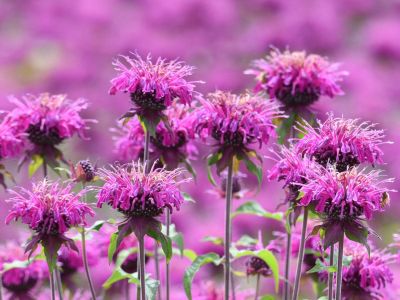How to Plant Bee Balm
Bee balm plants prefer moist, rich soil, and a sunny location. Bee balm will tolerate shade, particularly in hot-summer areas. Plant it in any protected spot that would benefit from a bright shot of color. Most varieties of the bee balm plant are between 2-1/2 feet to 4 feet (76 cm. – 1 m.) tall, but there are also dwarf varieties less than 10 inches (25.5 cm.) high. Dwarf varieties are excellent for container gardens or up front in your flower border where you can appreciate the shaggy, tubular blooms of the bee balm flower. Pick bee balm flowers frequently to encourage flower production. Deadheading, or removing spent flowers, will also promote a new flush of blooms.
Bee Balm Care
Growing bee balm is fairly easy as long as you keep the soil moist. Provide a good, multi-purpose fertilizer, and work it into the soil around the plant. If you want a bushier plant, pinch off the stem tips as new growth appears in the early spring. In late fall, cut bee balm down to just a few inches (5 to 10 cm.) tall. In cold areas, it may die completely to the ground during the winter but will reappear in the spring.
Powdery Mildew
The bee balm plant is susceptible to powdery mildew, appearing as a gray, powdery dust on the buds and leaves in moist, cool weather. If your bee balm plant develops mildew, you can treat it with natural remedies or a fungicide spray from the local garden center. Mildew may also be prevented by planting bee balm where it will have good air circulation and avoiding watering from overhead. If you have never enjoyed the bee balm flower, growing bee balm will add a touch of old-fashioned beauty to your flower garden and will also attract butterflies and bees.
